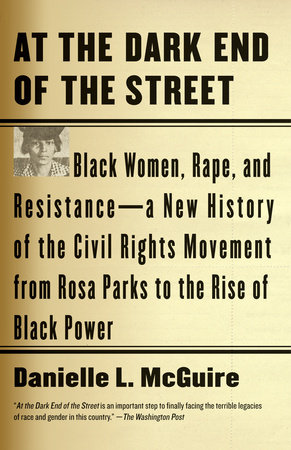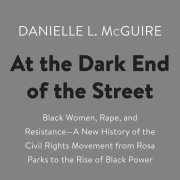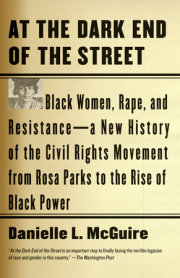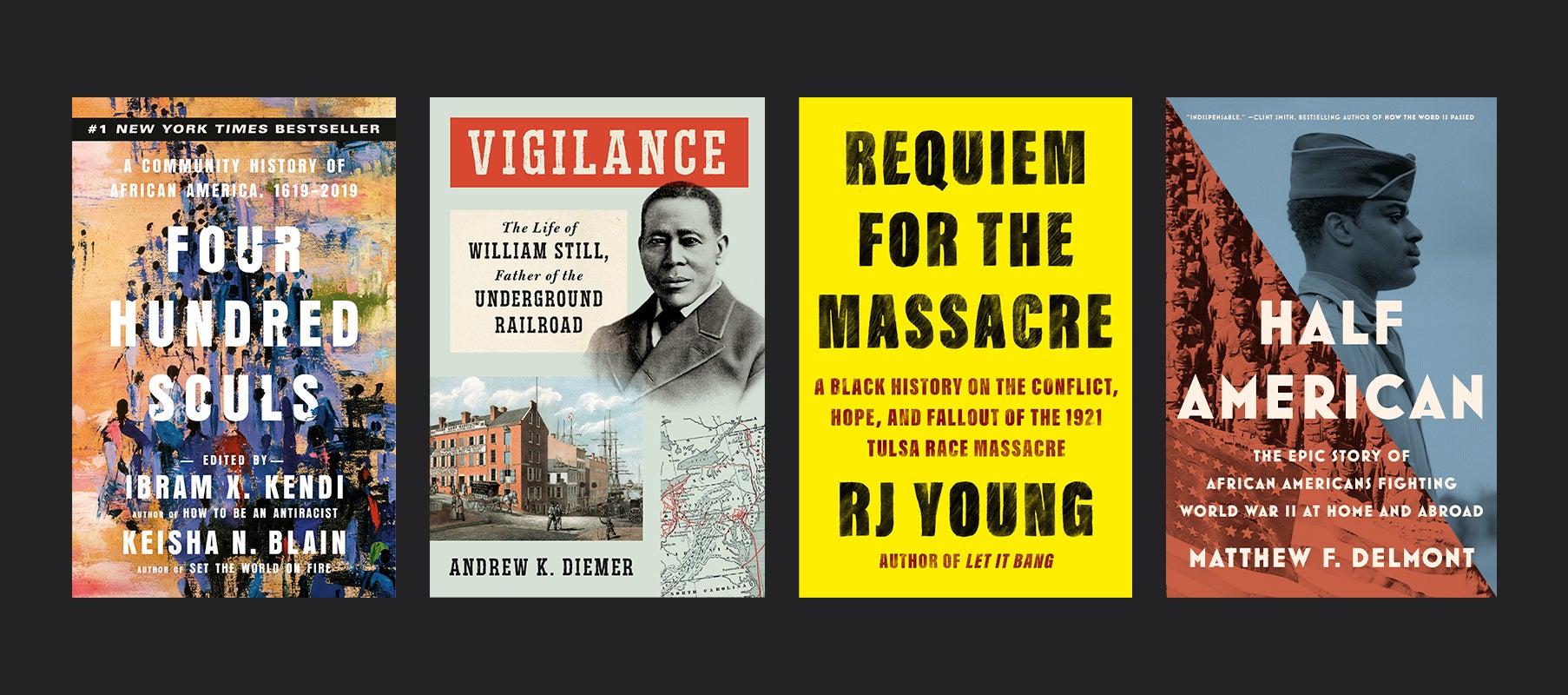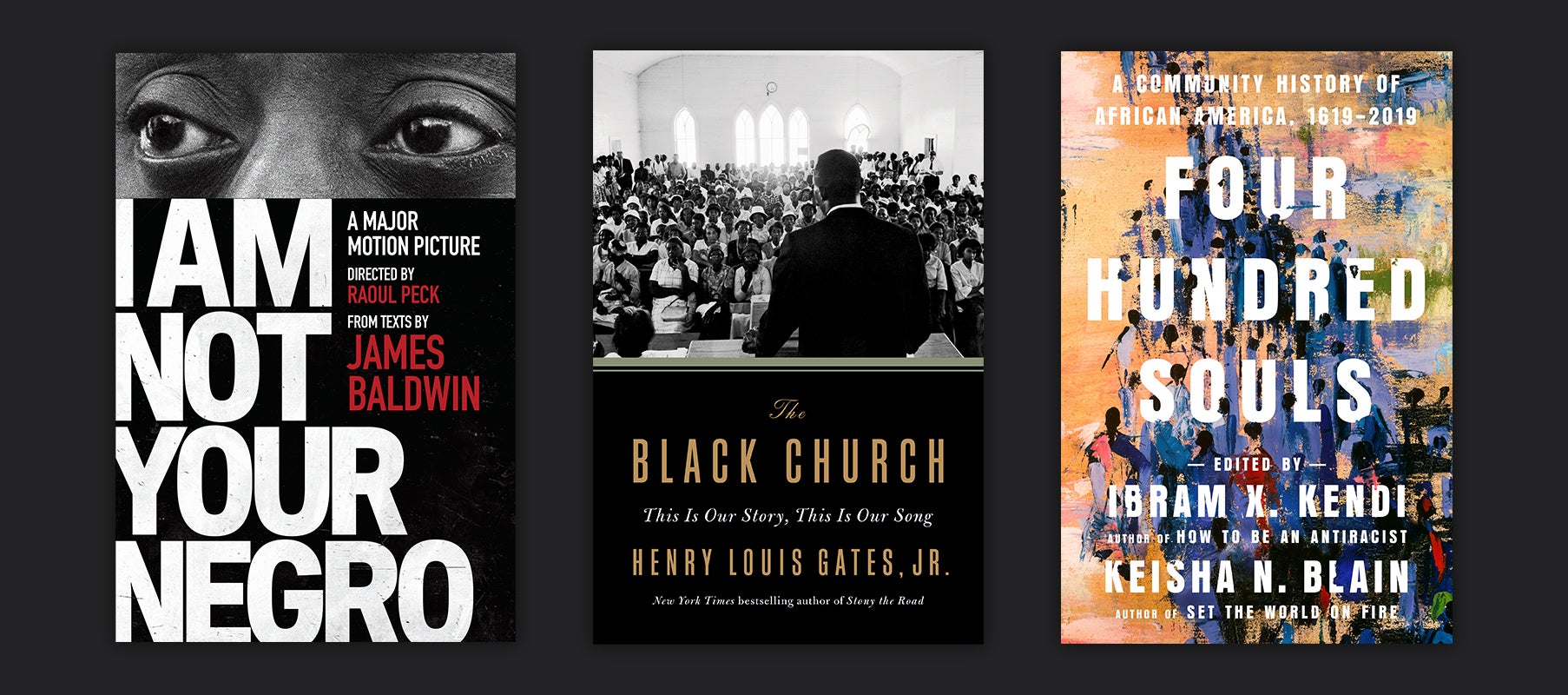Prologue
ON SEPTEMBER 3, 1944, the Rock Hill Holiness Church, in Abbeville, Alabama, rocked late into the night. It was nearly midnight when the doors of the wooden, one-story church swung open releasing streams of worshippers, all African American, into the moonlight. After a night of singing and praying, Recy Taylor, Fannie Daniel, and Daniel’s eighteen year- old son, West, stepped out of the country chapel and strolled toward home alongside the peanut plantations that bounded the Abbeville-Headland highway. Taylor, a slender, copper-colored, and beautiful twenty-four-year-old mother and sharecropper, noticed a rattletrap green Chevrolet pass them at least three times, young white men gawking from its windows.
“You reckon what they are up to?” Taylor asked.
Taylor and Daniel, a stout sixty- one- year- old woman, watched the car creep by one last time and roll to a stop a few feet ahead of them. Seven men, armed with knives and guns, got out of the car and walked toward the women. Herbert Lovett, the oldest of the crew at twenty- four and a private in the U.S. Army, shouted, “Halt!”
When they ignored the order, Lovett leveled his shotgun. West tugged at his mother’s sleeve, begging her to stop. “They might shoot you,” he whispered.
As the circle of men closed in, Lovett waved his gun at Taylor.
“We’re looking for this girl, right there. She’s the one that cut that white boy in Clopton this evening,” Lovett said, adding that the local sheriff, George H. Gamble, had dispatched the group to find the alleged assailant.
“You’re wrong,” Fannie insisted. “She’s been to my house all day.”
The men crowded closer, nodding their heads in agreement. “Ain’t this her?” Lovett asked.
“Yep, this the one,” Joe Culpepper said. “I know her by the clothes she got on.”
“That’s her,” Luther Lee agreed. “Get her!”
Lovett lurched toward Taylor and grabbed her arm. Then he turned to West and asked if Taylor was his wife.
“No,” West replied, “she’s Willie Guy Taylor’s wife.” Undeterred, Lovett extended his hand to the teenager, ordered him to shake it, and promised not to hurt Taylor.
“We’re going to take her up here and see if Mr. Gamble knows her,” Lovett claimed. “If she’s not the one, we’ll bring her right back.”
As Lovett spoke, Taylor managed to wrest her arm from his grasp and bolted toward a stand of trees behind a cabin.1
“Come back! Come back!” Fannie yelled. “They going to shoot you. Come back!”
“Stop!” Lovett shouted. He cocked the gun at the back of her head. “I’ll kill you if you run.”
Lovett walked Taylor to the car and shoved her into the backseat. Three men piled in behind her, while four others squeezed into the front. The headlights switched off and the car crept away. After a few miles, the green sedan turned off the main highway, rattled down a red-clay tractor path into the woods, and stopped in a grove of pecan trees. “Y’all aren’t carrying me to Mr. Gamble,” Taylor shouted. The men in the backseat clasped her wrists and ordered her to be quiet. Lovett grabbed his gun and waved Taylor and his companions out of the car.
“Get them rags off,” he barked, pointing the shotgun at her, “or I’ll kill you and leave you down here in the woods.”
Sobbing, Taylor pulled off her clothes.
“Please,” she cried, “let me go home to my husband and my baby.”
Lovett spread an old hunting coat on the ground, told his friends to strip down to their socks and undershirts, and ordered Taylor to lie down.
Lovett passed his rifle to a friend and took off his pants. Hovering over the young mother, he snarled, “Act just like you do with your husband or I’ll cut your damn throat.”
. . .
Lovett was the first of six men to rape Taylor that night. When they finished, someone helped her get dressed, tied a handkerchief over her eyes, and shoved her back into the car. Back on the highway, the men stopped and ordered Taylor out of the car. “Don’t move until we get away from here,” one of them yelled. Taylor heard the car disappear into the night. She pulled off the blindfold, got her bearings, and began the long walk home.
A few days later, a telephone rang at the NAACP branch office in Montgomery, Alabama. E. D. Nixon, the local president, promised to send his best investigator to Abbeville. That investigator would launch a movement that would ultimately change the world.
Her name was Rosa Parks.
In later years, historians would paint Parks as a sweet and reticent old woman, whose tired feet caused her to defy Jim Crow on Montgomery’s city buses. Her solitary and spontaneous act, the story goes, sparked the 1955 bus boycott and gave birth to the civil rights movement. But Rosa Parks was a militant race woman, a sharp detective, and an antirape activist long before she became the patron saint of the bus boycott. After meeting with Recy Taylor, Rosa Parks helped form the Committee for Equal Justice. With support from local people, she helped organize what the
Chicago Defender called the “strongest campaign for equal justice to be seen in a decade.” Eleven years later this group of homegrown leaders would become better known as the Montgomery Improvement Association. The 1955 Montgomery bus boycott, often heralded as the opening scene of the civil rights movement, was in many ways the last act of a decades-long struggle to protect black women, like Taylor, from sexualized violence and rape.
The kidnapping and rape of Recy Taylor was not unusual in the segregated South. The sexual exploitation of black women by white men had its roots in slavery and continued throughout the better part of the twentieth century.
When African Americans tested their freedom during Reconstruction, former slaveholders and their sympathizers used rape as a “weapon of terror” to dominate the bodies and minds of African-American men and women. Interracial rape was not only used to uphold white patriarchal power but was also deployed as a justification for lynching black men who challenged the Southern status quo. In addition to the immediate physical danger African Americans faced, sexual and racial violence functioned as a tool of coercion, control, and harassment. Ida B. Wells, the guntoting editor of the
Memphis Free Press who led a crusade against lynching in the 1890s, argued that white men accused black men of rape as part of a larger “system of intimidation” designed to keep blacks “subservient and submissive.” Worse, Wells argued at the turn of the century, white men used the protection of white womanhood to “justify their own barbarism.”
The rape of black women by white men continued, often unpunished, throughout the Jim Crow era. As Reconstruction collapsed and Jim Crow arose, white men abducted and assaulted black women with alarming regularity. White men lured black women and girls away from home with promises of steady work and better wages; attacked them on the job; abducted them at gunpoint while traveling to or from home, work, or church; raped them as a form of retribution or to enforce rules of racial and economic hierarchy; sexually humiliated and assaulted them on streetcars and buses, in taxicabs and trains, and in other public spaces. As the acclaimed freedom fighter Fannie Lou Hamer put it, “A black woman’s body was never hers alone.”
Black women did not keep their stories secret. African- American women reclaimed their bodies and their humanity by testifying about their assaults. They launched the first public attacks on sexual violence as a “systemic abuse of women” in response to slavery and the wave of lynchings in the post-Emancipation South. Slave narratives offer stark testimony about the brutal sexual exploitation bondswomen faced. For example, Harriet Jacobs detailed her master’s lechery in her autobiography to “arouse the women of the North” and “convince the people of the Free States what Slavery really is.” When African- American clubwomen began to organize antilynching campaigns during the late nineteenth century, they testified about decades of sexual abuse. On October 5, 1892, hundreds of black women converged on Lyric Hall in New York City to hear Ida B. Wells’s thunderous voice. While black men were being accused of ravishing white women, she argued, “The rape of helpless Negro girls, which began in slavery days, still continues without reproof from church, state or press.“ At the 1893 World’s Fair in Chicago, Fannie Barrier Williams told an audience of black and white clubwomen about the “shameful fact that I am constantly in receipt of letters from the still unprotected women of the South. . . .” Anna Julia Cooper, a Washington, D.C., educator, author, and respected clubwoman, echoed Williams’s testimony. Black women, she told the crowd, were engaged in a “painful, patient, and silent toil . . . to gain title to the bodies of their daughters.”
Throughout the twentieth century, black women persisted in telling their stories, frequently cited in local and national NAACP reports. Their testimonies spilled out in letters to the Justice Department and appeared on the front pages of the nation’s leading black newspapers. Black women regularly denounced their sexual misuse. By deploying their voices as weapons in the wars against white supremacy, whether in the church, the courtroom, or in congressional hearings, African- American women loudly resisted what Martin Luther King, Jr., called the “thingification” of their humanity. Decades before radical feminists in the women’s movement urged rape survivors to “speak out,” African-American women’s public protests galvanized local, national, and even international outrage and sparked larger campaigns for racial justice and human dignity. When Recy Taylor spoke out against her assailants and Rosa Parks and her allies in Montgomery mobilized in defense of her womanhood in 1944, they joined
this tradition of testimony and protest.
Montgomery, Alabama, was not the only place in which attacks on black women fueled protests against white supremacy. Between 1940 and 1975, sexual violence and interracial rape became one crucial battleground upon which African Americans sought to destroy white supremacy and gain personal and political autonomy. Civil rights campaigns in Little Rock, Arkansas; Macon, Georgia; Tallahassee, Florida; Washington, North Carolina; Birmingham and Selma, Alabama; Hattiesburg, Mississippi; and many other places had roots in organized resistance to sexual violence and appeals for protection of black womanhood.
And yet analyses of rape and sexualized violence play little or no role in most histories of the civil rights movement, which present it as a struggle between black and white men—the heroic leadership of Martin Luther King confronting intransigent white supremacists like “Bull” Connor. The real story—that the civil rights movement is also rooted in African-American women’s long struggle against sexual violence—has never before been written. The stories of black women who fought for bodily integrity and personal dignity hold profound truths about the sexualized violence that marked racial politics and African American lives during the modern civil rights movement. If we understand the role rape and sexual violence played in African Americans’ daily lives and within the larger freedom struggle, we have to reinterpret, if not rewrite, the history of the civil rights movement. At the
Dark End of the Street does both.
It is no surprise that buses became the target of African- American resistance in Montgomery during the 1955–56 boycott. It was much easier, not to mention safer, for black women to stop riding the buses than it was to bring their assailants—usually white policemen or bus drivers—to justice. By walking hundreds of miles to protest humiliation and testifying publicly about physical and sexual abuse, black women reclaimed their bodies and demanded to be treated with dignity and respect. Coupling new historical evidence with a fresh perspective, Chapters 2 and 3 reveal the history of the Montgomery campaign as a women’s movement
for dignity.
Issues of sexual violence were crucial both to the civil rights movement and to the white supremacist resistance. Segregationists responded to the nascent African-American freedom movement with a sexually charged campaign of terror to derail the freedom movement. Between 1956 and 1960, black Southerners braved the Ku Klux Klan, the White Citizens’ Council, and other extremist groups, sparking some of the fiercest struggles for black humanity of the modern civil rights movement. These battles, highlighted in Chapter 4, exposed the power of sex in maintaining the South’s racial hierarchy and underscored the extent to which whites
would fight to preserve it.
Often ignored by civil rights historians, a number of campaigns led to trials and even convictions throughout the South. These cases, many virtually unknown, broke with Southern tradition and fractured the philosophical and political foundations of white supremacy by challenging the relationship between sexual domination and racial equality.
Nowhere was this more apparent and more important than in Tallahassee, Florida, where Betty Jean Owens, an African-American college student, stood in front of an all- white jury in 1959 and testified about being kidnapped and gang-raped by four white men. The extraordinary trial, the subject of Chapter 5, focused national attention on the sexual exploitation of African-American women. For perhaps the first time since Reconstruction, black Southerners could imagine government as a defender of their manhood and womanhood. The Tallahassee case led to rape convictions elsewhere that year in Montgomery, Alabama; Raleigh, North Carolina; and Burton, South Carolina. The 1959 Tallahassee rape was a watershed case that remains as revealing now as it was important then.
Black women’s testimonies revealed their vulnerability across the South, especially in Mississippi. Most accounts of the Mississippi movement focus on racist brutality directed at men—from Emmett Till and Medgar Evers to Andrew Goodman, Michael Schwerner, and James Chaney. Chapter 6 challenges the dominant historical narrative of the Mississippi freedom struggle by documenting black women’s resistance to racial
and sexual abuse.
The 1965 Selma, Alabama, campaign, like the Montgomery movement, has an important history rooted in sexualized violence that historians have not yet explored. Federal intervention and congressional action on behalf of African Americans in 1964 and 1965—especially the Civil Rights Act and the Voting Rights Act—constituted the most dangerous threat to white dominion and left segregationists reeling. But the segregationists fired back with traditional ammunition of sexual slander and the “black beast rapist.” Chapter 7 documents how white supremacists in Selma and across the South used the rhetoric of rape and “miscegenation” to resuscitate and revive massive resistance, underscoring the importance of sex and sexual violence to the maintenance of white supremacy. Civil rights activists were not only “outside agitators” or Communists intent on destroying the Southern way of life; now they were sexual fiends. It was within this storm—and because of it—that the Ku Klux Klan murdered Viola Liuzzo, a white housewife from Detroit who embraced the black freedom struggle. Her detractors, of course, accused her of embracing black men.
An analysis of sex and sexualized violence in well- known civil rights narratives changes the historical markers and meanings of the movement. Like the Tallahassee case, the 1965 trial of Norman Cannon, a white man who abducted and raped a black teenager in Hattiesburg, Mississippi, had broad implications for both the Mississippi movement and the African-American freedom struggle as a whole. The verdict was recognized nationally as a major victory. It ought to be considered one of the bookends of the modern civil rights movement. And yet the story has never been told. While the Voting Rights Act is often referenced as the culminating achievement of the modern civil rights movement, a pillar of white supremacy fell in 1967 when the Supreme Court banned laws prohibiting interracial marriage in the landmark
Loving v. Virginia decision. Only when we place the
Loving decision within the long struggle for black women’s bodily integrity and freedom from racial
and sexual terror can it be properly recognized as a major marker in the African-American freedom movement.
The struggle did not stop with that landmark victory. The right of African-American women to defend themselves from white men’s sexual advances was tested in the 1975 trial of Joan Little, a twenty-year-old black female inmate from Washington, North Carolina, who killed her white jailer after he allegedly sexually assaulted her. The broad coalition of supporters who rallied to Little’s defense—from the National Organization for Women to the Black Panther Party—reflected the enormous social, political, and economic changes wrought by the civil rights movement, the women’s movement, and the emergence of the New Left and Black Power. But it also showed continuity with the past—the Free Joan Little movement mirrored the eclectic coalition that formed to demand justice for Recy Taylor in 1944. They were both led primarily by African-American women and helped serve as catalysts for larger struggles. The stunning verdict, announced by a jury made up of whites and blacks, signaled the death knell of the rape of black women that had been a feature of Southern race politics since slavery.
Like the kidnapping and rape of Recy Taylor in Abbeville, Alabama, in 1944; Betty Jean Owens in 1959; Rosa Lee Coates in 1965; and hundreds of other African-American women throughout the segregated South, these brutal attacks almost always began at the dark end of the street. But African Americans would never let them stay there.
Copyright © 2010 by Danielle L. Mcguire. All rights reserved. No part of this excerpt may be reproduced or reprinted without permission in writing from the publisher.

